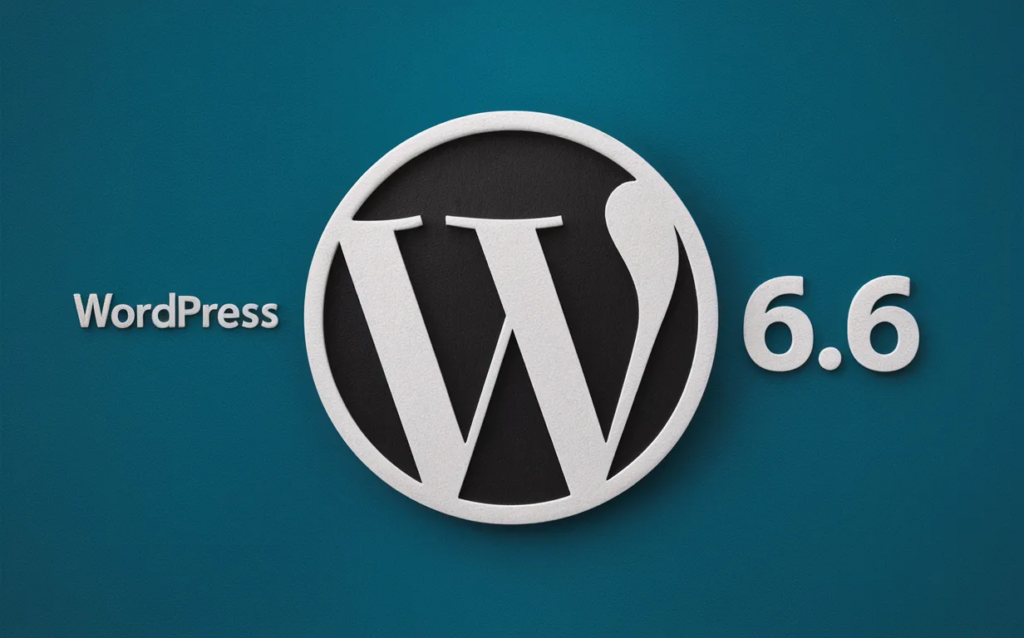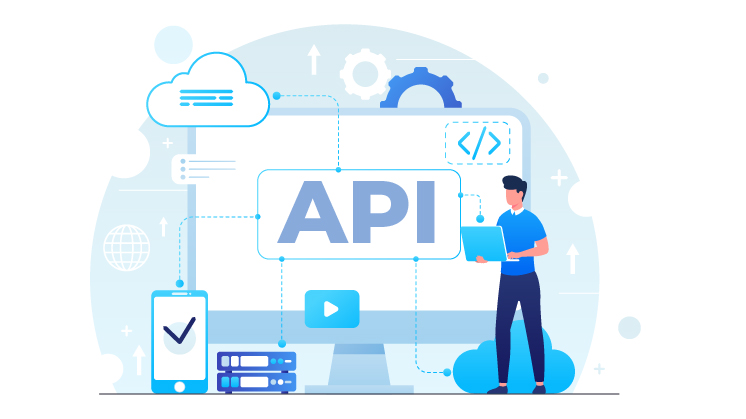While WordPress 6.5 surprised us with its focus on the block editor, WordPress 6.6, scheduled for release on July 16, 2024, takes a step back to solidify the foundation. This doesn’t mean there’s nothing to get excited about! In this article, we will explore key enhancements that are coming in WordPress 6.6, along with some interesting developments in Gutenberg.
Key Takeaways of WordPress 6.6 Update
- Focus on Refinement: While not as feature-packed as 6.5, WordPress 6.6 prioritizes API improvements, developer experience enhancements, and theme refinements.
- API Enhancements: The Interactivity and Block Bindings APIs will receive better testing, error reporting, and bug fixes.
- Gutenberg Updates: Gutenberg 18.2 and 18.3 introduce experimental full-page navigation, improved block editing for connected sources, and UI updates for background images.
- Farewell to Older PHP: Support for PHP versions 7.0 and 7.1 ends with 6.6. The minimum supported version is bumped to 7.2.24, with a strong recommendation for 7.4 or later.
- Theme & Design Updates: Expanded global style variations, negative margin support, and a default font size setting offer more control and flexibility for designers and developers.
- Block Editor Improvements: Bug fixes and refinements across various blocks in Gutenberg.
- Blueprint Gallery Debuts: Explore live demos of various WordPress setups with the new community blueprint repository.
WordPress 6.6 Release Schedule

The release schedule for the WordPress 6.6 update is as follows:
- June 4, 2024: Beta 1. From this point on, core contributors will focus on testing and fixing bugs discovered during beta testing. Begin writing Dev Notes and the About page.
- June 11, 2024: Beta 2. Test the beta release, fix bugs discovered during beta testing, and continue writing Dev Notes and the About page.
- June 18, 2024: Beta 3. Test the beta release, fix bugs discovered during beta testing, and continue writing Dev Notes and the About page.
- June 25, 2024: Release candidate 1. Publish the Field Guide with Dev Notes, commit the About page, begin drafting the release post, hard string freeze, and branch for the release.
- July 2, 2024: Release candidate 2. Update the About page images and continue drafting the release post.
- July 9, 2024: Release candidate 3. Update the About page images and continue drafting the release post.
- July 15, 2024: Dry run for release of WordPress 6.6 and 24-hour code freeze.
- July 16, 2024: WordPress 6.6 is released!
WordPress 6.6 Beta 1 Released: A Look at the New Features and Improvements
The first beta release of WordPress 6.6 is here with quite a few exciting new features and improvements. This beta version provides a glimpse into what you can expect from the final release scheduled for July 16, 2024. It’s a massive opportunity for testers to jump in and help identify any bugs or usability issues.
Key Highlights of the WordPress 6.6 Beta Release
- The Beta 1 version includes 97 enhancements and 101 bug fixes specifically targeted at the editor.
- Overall, WordPress 6.6 Core encompasses approximately 206 tickets, addressing various platform aspects.
What’s new in WordPress 6.6 beta 1?
The upcoming WordPress 6.6 release aims to refine and improve the functionalities introduced in previous versions, making them more flexible and user-friendly. Also, this update brings several exciting new features, further enriching the WordPress experience.
Here are the key highlights in detail:
Enhanced Data Views:
WordPress 6.6 beta 1 introduces improved data views, making it easier for you to visualize and interact with your content. This is particularly beneficial for users who work with large amounts of data or require a more granular view of their content.
Testing the WordPress 6.6 Beta Version
Rather than installing the beta version on a live site, testing it on local sites or dedicated testing environments is recommended. You can do this in one of the following ways:
- Plugin Installation: Install and activate the WordPress Beta Tester plugin on an existing WordPress installation. Select the “Bleeding Edge” channel and the “Beta/RC Only” stream.
- Direct Download: Download the Beta 1 version (zip file) and install it on a WordPress website.
- Command Line: Use the WP-CLI command: wp core update –version=6.6-beta1
- WordPress Playground: Utilize a 6.6 Beta 1 WordPress Playground instance to test the software directly within your browser, eliminating the need for a separate site or setup.
Override Synced Patterns:
Another welcome addition is the ability to override synced patterns. This means you can now customize specific patterns within a synced template, giving you more flexibility over your website’s overall design.
Viewing All Available Blocks
Previously, when a block was selected, and the block Inserter was opened, you could only see the blocks that were allowed to be added to the selected block. In WordPress 6.6, the experience has been improved:
- When a block is selected, you’ll see two distinct lists.
- The first list displays blocks that can be inserted directly into the selected block.
- The second list shows all the other available blocks in the system.
If you select a block from the second list, WordPress 6.6 will add it below your currently selected block, allowing you to incorporate it seamlessly into your next section or component.
Unified Publish Flow
The publishing process has been revamped in WordPress 6.6 beta 1. WordPress 6.6 brings the post and site editors closer together than ever before. Whether you’re writing for a post in the post editor or a page in the Site Editor, your experience will be consistent and unified.
Style Variations and Section Styles:
Take control of your website’s aesthetics with style variations and section styles. WordPress 6.6 significantly expands your design options out of the box without requiring any additional installations or configurations:
- Your theme will pull color palettes and typography style sets from the installed variations.
- You can mix and match these elements, unlocking a world of creative expression possibilities.
Native Grid Layout:
Introducing a native grid layout system in WordPress 6.6 beta 1 made building beautiful and responsive layouts easier. This eliminates the need for third-party plugins and provides a more streamlined way to create grid-based layouts for your website.
Addressing CSS Specificity
To make it easier for your variations to override the global styles CSS, those styles are now wrapped in [:root]. This limits their specificity, ensuring your variations take precedence. For more detailed information, refer to the full discussion on GitHub, where developers already express their opinions.
Improved Pattern Management in Classic Themes:
Classic themes now offer the same level of pattern management capabilities as block themes:
- You can view all available patterns in a single, consolidated view.
- Inserting a pattern into your content is now possible on the fly.
See All Blocks When Inserting:
Inserting blocks just got more efficient. With WordPress 6.6 beta 1, you can now see all available blocks when inserting a new block, streamlining your workflow and making finding the block you need easier.
Negative Margins and Rollback Auto-Updates:
For those who like to have more control over their website’s design, WordPress 6.6 beta 1 introduces support for negative margins. This allows for more creative layout possibilities. Additionally, the ability to rollback auto-updates provides greater control over the update process, giving you the flexibility to update your website on your own terms.
These are just some of the exciting new features and improvements you can expect from WordPress 6.6 beta 1. If you’re a WordPress user looking to stay ahead of the curve and explore the latest advancements, downloading and testing this beta release is highly recommended.
WordPress 6.6 Release – Core Updates
API Refinements

The Interactivity API and Block Bindings API, introduced in WordPress 6.5, are getting some much-needed attention in 6.6. The focus here isn’t on flashy new features but on stability and developer experience.
Expect better test coverage, improved code quality, and more robust error reporting for the Interactivity API. This translates to smoother operation and easier debugging for developers.
Gutenberg updates have already introduced some exciting improvements to the Interactivity API. The ability to define multiple event listeners and the allowance of third-party interactive blocks within the Query block are just a few examples. The experimental full-page, client-side navigation through the Interactivity API in Gutenberg 18.3 is a glimpse into future possibilities. It’s still under development and might cause theme conflicts.
Block Bindings API enhancements in 6.6 will allow editing connected sources directly from the block, paving the way for potentially making editor APIs public. A UI for creating bindings is also in the works, but it likely won’t be ready for WordPress 6.6.
The Block Hooks API, introduced earlier, will continue to evolve, focusing on a user interface for hooked blocks and an overall improved developer experience. The HTML API is also gaining traction, aiming for a custom, spec-compliant encoder/decoder and a mechanism to communicate when an HTML document undergoes retroactive changes.
No Support for Older PHP Versions
With WordPress 6.6, support for PHP versions 7.0 and 7.1 will be discontinued. The minimum supported version will be bumped to 7.2.24, with a strong recommendation to use PHP 7.4 or later. This decision reflects the declining usage of older PHP versions within the WordPress community.
The Blueprint Gallery
Haven’t you tried WordPress Playground yet? Now’s the perfect time!
An official repository for community-created blueprints has been established, offering live demos of various WordPress setups. This is a fantastic resource for exploring different configurations and getting inspiration for your WordPress websites.
Themes and Design

Now, you will get more control and more creativity. The focus on themes in WordPress 6.6 update brings exciting developments for designers and developers. Here are some highlights:
- Color and Typography Style Variations: Expanded global style variations allow users to mix and match color and typography sets, offering more flexibility and customization options.
- Default Font Sizes Setting: Theme developers can now disable the default font sizes from being selectable in the user interface, resolving a longstanding issue where core sizes clashed with theme-registered sizes.
- Layout Updates: Negative margin support and the experimental full-page, client-side navigation offer more creative freedom for layout design.
- Text Alignment Block Support: A new property allows block developers to control text alignment. The goal is to migrate this feature to core blocks and support it via global styles.
- Post Classes in the Editor: Developers can now utilize standard post classes (think get_post_class()) within the Gutenberg editor, simplifying consistent styling based on context.
Block Editor Enhancements
Bugs will be removed and features refined in the WordPress 6.6 update.
Gutenberg continues to receive regular updates, and WordPress 6.6 benefits from several bug fixes and improvements across various blocks. These include:
- The removal of unnecessary wrapper elements in the Latest Posts block.
- Addition of missing classes to the front end of the Latest Posts block.
- Reduced CSS specificity for cleaner styling in the Pullquote and Separator blocks.

Background Image Updates:
Following the introduction of theme.json support for background images in Gutenberg 18.1, version 18.2 refines the UI controls. This includes displaying the default background size value and clearer labels to avoid confusion between the background image and color options.
Negative Margin Support:
Negative margins, a popular feature previously available only via theme.json and custom spacing presets, are now accessible through the editor UI, making them more user-friendly.
Default Theme Updates:
The default themes received some bug fixes, including resolving font size issues with the Pullquote block, preventing fatal errors on PHP 8.0, and updating the header for better Block Hooks API support.
Last Word
While WordPress 6.6 might not be as flashy as its predecessor, it lays a strong foundation for future development. The focus on API enhancements, improved developer experience, and theme refinements paves the way for a more stable, secure, and customizable WordPress. Which feature is more exciting for you? Let us know in the comments.
FAQs About WordPress 6.6 Update
Is WordPress 6.6 a major update?
While not as feature-rich as 6.5, the WordPress 6.6 release focuses on important refinements. Expect improvements to existing APIs, a better developer experience, and theme enhancements.
What are the key API changes in 6.6?
The Interactivity and Block Bindings APIs will receive better testing, error reporting, and bug fixes, resulting in a more stable and reliable foundation for future development.
Is there any particular name for WordPress 6.6, like “Regina” for WordPress 6.5?
No, WordPress 6.6 won’t have a specific codename like “Regina” used for 6.5. WordPress follows a version numbering system for releases and doesn’t assign codenames to each release. This makes it easier to track version history and avoids confusion for users.
What exciting features are coming to Gutenberg with WordPress 6.6?
Gutenberg 18.2 and 18.3 introduce some interesting features, such as experimental full-page navigation, improved block editing for connected sources, and UI updates for background images.
Is WordPress 6.6 dropping support for any PHP versions?
Yes, support for PHP versions 7.0 and 7.1 will be discontinued. The minimum supported version is now 7.2.24, and it is strongly recommended that you use PHP 7.4 or later.
What are some of the theme and design benefits of WordPress 6.6 release update?
Theme developers and designers will enjoy expanded global style variations, negative margin support, and a default font size setting, allowing for more control and creative freedom.